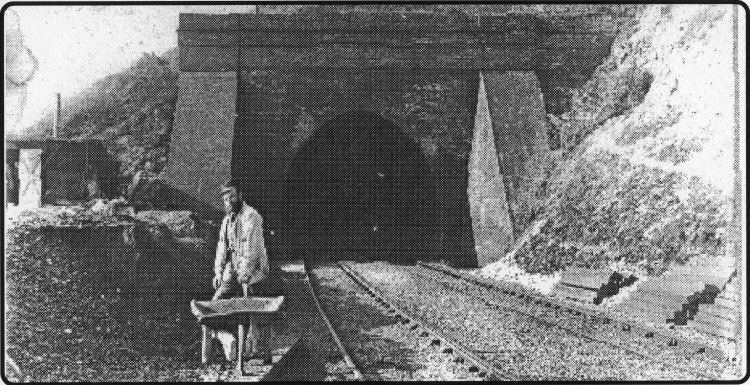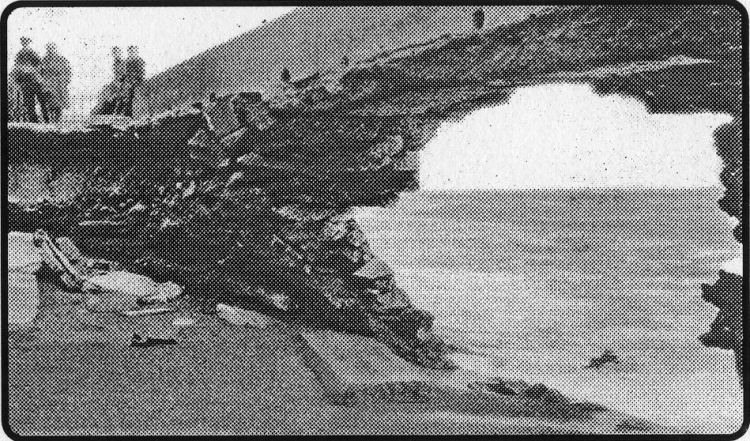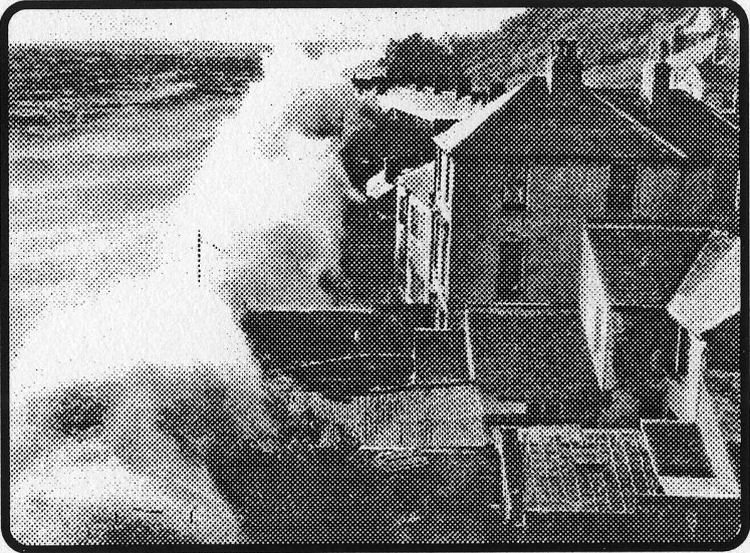
Published 7 June 2001



Readers comer
A Memories reader In Hawkinge was curious about a recent reference to two
former “Flying P Line” sailing ships being towed through the Channel on the
way to the breakers yard In 1951.
They were Gustav Erickson’s Pamir and Passat, once German sister ships of
the Preussen, which was wrecked off Dover in 1910. Both were actually
reprieved and used as sail training ships.
Going through some old newspaper cuttings the other day I came across one
from the Children’s Newspaper, of August 1951 reporting that both four-masted
barques had been saved from the scrapheap at the eleventh hour.
And both vessels were due to sail for South America and be fitted with
auxiliary engines, extra bulkheads and wireless for extra safety.
Tragically, only a few years later, the Pamir was lost in Hurricane “Carrie”
in the Atlantic, with wind speeds estimated at 70 knots and 36ft seas, in
September 1957.
This was after her cargo of bulk, not bagged, barley is believed to have
shifted.
No less than 78 ships took part in a search for survivors, and in January
1958 a public inquiry opened into her loss with evidence from six survivors.
It was concluded that she had not been properly handled in such severe
conditions due to her master’s inexperience in command of sailing ships.
Water ballast tanks had been used to carry 450 tons of grain instead of 750
tons of water and there seemed to have been a lack of experienced ABs in the
crew.
My Hawkinge caller recalled seeing the Pamir referred to in an old film
called “Windjammer.”
Another cutting I found told how the Pamir was seized by New Zealand in the
Second World War, and modernised but after the war handed back to Finland.
Railway memento
THE OLD railway photograph, right, was shown to me by Susan Lees, of Alkham,
who is gathering material for another picture book - about Capel -similar to
one she did for Meresborough Books on Alkham. That was in association with
aviation historian Roy Humphreys, of Hawkinge.
The photo was shown to her by Mrs Dot Daniels, of Holiingbury Farm, Capel
Street, a grand-daughter of Jimmy Hatton, the plate layer in the picture.
Mrs Daniels told Susan that she believed local farmers were expected to put
in so many days work plate laying for the railway - I wonder if that was,
perhaps, a private arrangement where railway companies leased some land for
farming purposes?
The picture could date from around the 1880s.
Local author’s appeal
ANOTHER local author, Martin Easdown wants to get in touch with anyone who
lost relatives killed in the devastating First World War German bombing
Abbott’s Cliff Tunnel about 1890, a picture shown to me by Susan Lees, of
Alkham, who is working on a new book on Capel. This is one of the latest
pictures she has been lent, for possible inclusion in the book. Pictured at
work in the photo is Jimmy Hatton and Susan thinks he must have been working
at the west end of what is, today, Samphire Hoe.
raid on Folkestone, Cheriton and Hythe on May 25, 1917, or who knows any
stories about the raid.
Martin can be contacted on 230202 or alternatively you can reach him by
e-mail on MARLINSEABR00K@aol.com
Gale hits Sandgate
OLDER copies of “The Illustrated London News” are always Interesting when
they record regional events and I recently came across two pages from an
Issue published in November 3, 1945. The paper, printed in sepia, pictured
dramatic storm scenes at Sandgate (left) and Seabrook (top), as mountainous
seas pounded coast defences, throwing up sheets of spray
and ripped a hole through the seawall Mountainous waves pounded sea defences
at
near Sandgate Castle. Sandgate, piercing the seawall in October 1945.
------

 |
Hythe honours hero back from the bitter Boer War
*1 Qni N0 NAME would stand out with greater brilliance than that of
Major-General Sir Ian Hamilton, DSO, the Hythe Boer War hero of the
Siege of Ladysmith, said the Herald when he was made an Honorary Freeman
of Hythe at a ceremony attended by many prominent local citizcns. It was
one of the biggest events in the old Cinque Port town for years and the
Herald published a four page illustrated supplement on fine art paper.
The uniforms of the military officers and the gowns of VIPs' wives were
a sight to behold. There were pictures of Sir Ian arriving at Hythe
station to a big welcome, of his horse-drawn carriage leaving the
station, a view of the procession leaving the Town Hall after the
presentation of the Freedom of the Borough, the ornate silver casket
containing the scroll, and a photograph taken at the reception banquet
at the Hythe Institute. On a sad note, on another page was a picture of
former Herald staff member L-cpI Francis in a wheelchair, for he had
been crippled during the fighting in the Boer War and still had two
bullets in his body.
|
Council to join others in fighting bus fares rise
4 QE4 FOLKESTONE Town Council joined with other local councils in
objecting to proposed bus fare increases. And there was a call for the
East Kent Road Car Company to reconsider its proposals with a view to
retaining some Id fare stages and lower rates of increase In some single
and return fares. The Council turned down a £3,000 scheme to convert the
old Metropole Lift house in lower Sandgate Road into a public shelter.
The estimated cost of conversion, to include public toilets, was £3,000.
The Herald featured the district's veteran Punch and Judy man Frank
Peters, of Sellindge, whose 30 year career was launched almost by
accident after he stepped in to the breach when another artiste proved
too ill to complete a fete engagement. Frank, who lived in a caravan,
was already a ventriloquist and wont on to became a children's
favourite. He entertained at Maddlson's, Greatstone and the Beach
Holiday Camp, Dymchurch, among other venues around the country. Mourned
at Hythe was Alfred Drake, 84, one of the oldest members of Hythe Bowls
Club, who moved from Ryde. Isle of Wight in 1915 and became proprietor
of local mineral water firm Harris & Co.
|
‘Houdini’ stunt man in bid to ride handcuffed to bike
4 FILM stunt man Harry Lorraine arrived at
Folkestone on a 6,000 mile round tour of the country riding a Douglas
motorcycle while 'handcuffed* — or should one say shackled by his hands
and feet, and by the neck, to the machine. He said he changed gear with
his teeth. It’s a wonder he wasn't arrested for dangerous driving! All
for a wager, his target was to complete the ride in six weeks. A heavy
explosion, which, It was later learned was the Army blowing up a
Martello Tower on the ranges, sent firemen rushing to the fire station,
believing there must be a fire. The local group of British Fascists
offered their cooperation to the police to help in the General Strike,
volunteering 50 men to act as special constables with some of them
prepared to do night duty after their normal work. Others with transport
were to report to Major DC Allen, DSO, of Maltby's Motors, for duties,
taking special constables to work or despatch riding. A recent decision
to truncate Sunday bus services where they caused a noise during church
services was criticised by Chamber of Commerce members who told of
people, particularly visitors, who had missed trains because passengers
had not been made aware of the changes in the service.
|
Horses Bones Farm’ - and ‘Madhouse Field* mystery
»f THERE'S no doubt about it, there are some
X«//Oodd local place names. Those in Kent Include Wheelbarrow Town
(shades of the “Flower Pot Men"?) and nearer home is one I have never
heard of, Horses Bones Farm, Lydd - that was until I read a piece by the
Herald's former columnist Stroller, back in 1976. Stroller commented
that hardly a week went by without someone posing the obvious question
to the then farmer, Hugh Baicomb, how did it get its name? Hugh had
heard ail kinds of theories, but his favourite was that the farm was
once used for stabling cavalry horses brought home from the Napoleonic
Wars. Certainly horses bones were ploughed up from time to time. And
what of “Madhouse Field" Just outside the farmhouse? “We haven't a
clue,” he used to say, although 30 years before he recalled finding lots
of masonry when the field was ploughed one year. Local historian Anne
Roper once suggested that there may have been a “pesthouse” hospital at
one time, connected with the Plague. Weshall probably never know for
sure. I wonder what Channel Four’s “Time Team” would have made of it had
they been around at the time! A renewed bid for consent to build homes
in Shepway Quarry, Lympne, was being made 25 years ago. There were hints
the latest scheme would succeed. |
|





